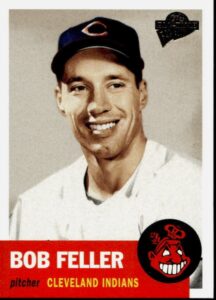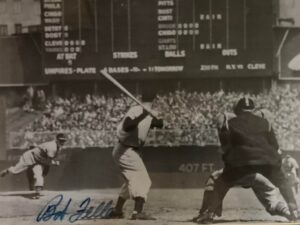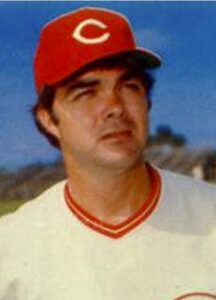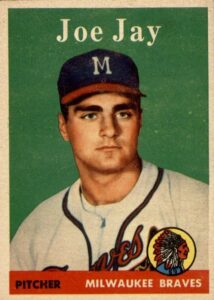From Bob Feller to Nolan Ryan and Joey Jay to Jamie Moyer, Baseball Roundtable looks t some mound accomplishments for the “ages,” as I wait for the first Spring Training box scores.
YOUTH WILL BE SERVED
Youth was never served (on the diamond) quite like it was for hard-throwing teenager Bob Feller. As the chart below shows, if you make a list of the youngest pitchers to fan ten or more batters in an MLB game, Bob Feller holds the first nine positions.
How remarkable was “Feller’s Feat” at the time? Consider that, in Feller’s rookie season, MLB pitchers averaged 3.5 strikeouts per nine innings and there were only 24 double-digit strikeout games notched by MLB pitchers. Feller, who had yet to graduate from high school, had four of them. By comparison, in 2023 there were an average of 8.9 strikeouts per nine innings and there were 225 games in which a pitcher recorded ten or more whiffs.
Note: For this post, Baseball Roundtable is using Modern Era (post-1900) National League and American League statistics. An explanation of the reasoning behind that decision can be found at the end of this post.
Feller’s four double-digit-strikeout games in 1936 were second only to the six by Van Lingle Mungo (gotta love that name) of the Dodgers. Mungo, however, had 37 starts that season, while Feller (who made his first start on August 23) had just eight. (In his first start, Feller threw a complete game, in a 4-1 win over the Browns. He gave up just six hits and one-run, while walking four and fanning 15. He faced 11 batters (including pitchers and pinch hitters) in the game and fanned nine of them at least once. Before that first start, Feller had pitched in six games, going a total of eight innings, giving up 11 hits and seven runs, walking eight and fanning seven. Starting seemed to agree with him more.
Four weeks and four starts later, Feller fanned 17 Athletics in a Cleveland 5-2 win over Philadelphia – setting (at the time) the American League record for strikeouts in a nine-inning game and tying the MLB mark., (Both since broken.) Side note: Intimidation may have played a role in that win. “Rapid Robert” walked nine and hit a batter in that game, whole giving up just two hits. For more about Feller, as well as a look at a lineup of batters who fared well against “The Heater from Van Meter,” check out the Bob Feller edition of the Roundtable’s “Who’s You Daddy?” series. Just click here.
Bob Feller had 51 double-digit strikeout games in his career, 16 before his 20th birthday.
Now, if you go 20 games deep in your look at the youngest pitchers to record ten strikeouts in a game, you’ll find:
- Bob Feller – ten times;
- Gary Nolan – five times;
- Bert Blyleven – twice;
- Felix Hernandez;
- Dwight Gooden; and
- Harry Harper.
Hall of Famer Feller pitched in 18 MLB seasons (1936-41, 1945-56), all for the Indians. He went 266-162, 3.25 and lead the AL in victories six times and strikeouts seven times. If he hadn’t lost three prime years to military service (WWII), he very likely would be among MLB’s 300-gamer winners.
I’d be remiss here if I didn’t give a shout out to Gary Nolan – the only pitcher other than Feller to crack the top ten list (above). Nolan was a teenage phenom and first-round draft choice (Reds), lucky 13th overall, in 1966. He had won more than 30 games as a high schooler, leading his high school team to three straight league titles. He also led his American Legion team to three state titles and had had games of 23 and 25 strikeouts for the squad.
Nolan started his professional career in 1966, going a combined 14-8, 2.58 with 229 strikeouts in 176 innings at Rookie- and A-Ball. In 1967, about six weeks before his 19th birthday, he made his MLB debut in a start for the Reds (versus the Astros) in Cincinnati. His first MLB inning went: SS Sonny Jackson (strikeout); RF Jim Landis (strikeout): 2B Joe Morgan (walk); CF Jimmy Wynn (strikeout). Nolan got the win, going 7 1/3 innings, (six hits, three runs, two walks, eight whiffs), as the Reds prevailed 7-3. In his very next outing, he made the double-digit strikeout list. Facing the Dodgers in Los Angeles, Nolan got a no-decision, going nine innings, giving up eight hits and one run, while walking two and fanning 12. Over the course of his rookie season, he would record one fifteen-strikeout game, three twelve-whiff games and one ten-strikeout contest.
Say Hey, Willie
On June 7 of his rookie season, Gary Nolan notched 15 whiffs in 7 2/3 innings of a 4-3 Reds’ loss to the Giants. Nolan left with the game tied at 3-3. At that point, he had faced Giants’ star Willie Mays four times in the game and fanned him four times. (One of just four, four-whiff games in Mays’ career.)
Nolan finished his rookie season at 14-8, 2,58, with 206 strikeouts in 226 2/3 innings. Since 1901, only Dwight Gooden (276) and Bob Feller (240) have fanned more batters in a “teenage” season. For those who like to know such things, Amos Rusie holds the All-time record for strikeouts in a teenage season at 341 (in 548 2.3 innings) for the 1890 Giants.
Nolan, who faced arm and shoulder issues during his career, pitched in ten MLB seasons (1967-73, 1975-77), almost all with the Reds (245 appearances with the Reds, five with the Angels). He went 110-70, 3.08, with 1,039 strikeouts in 1,674 2/3 innings. He was an All star in 1972, when he went 15-5, 1.99 in 25 starts. Ironically, his highest strikeout ratio (8.2 per nine innings) came in his rookie season. (Nolan did suffer a shoulder injury the following spring.) Over his career, he had four seasons of 15 or more wins.
OLD GUYS RULE
When you look at the oldest hurlers with ten-strikeout games, as you might expect Nolan Ryan (here’s that second Nolan, mentioned in the header) and Randy Johnson dominate the chart. Ryan has seven of the top ten spots, and is the only MLB pitcher with a ten-whiff game after his 45th birthday. Johnson’s last double-digit strikeout game came 18 days before his 45th birthday. For the Nolan Ryan edition of “Who’s Your Daddy?,” click here. For Randy Johnson, click here.
You have to go down to number 13 before you find anyone not named Ryan or Johnson on this “Old Guys Rule” list – and that would be Gaylord Perry, with an 11-tsrikeout game at age 43 years-243 days.
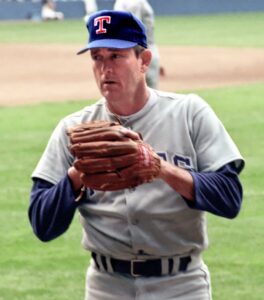 Looking at the top twenty, you would see:
Looking at the top twenty, you would see:
- Nolan Ryan – 14 times,
- Randy Johnson – four times; and
- Gaylord Perry – twice.
I went all the way down to number 50 and found:
- Nolan Ryan – 34 times
- Randy Johnson – seven times;
- Roger Clemens – four times;
- Gaylord Perry – twice;
- Rich Hill;
- Steve Carlton; and
- Johnny Niggerling.
Johnny Niggeling, the least familiar name on this list, tossed a 13-inning, 12-strikeout game for the Washington Senators on June 15, 1945 – at the age of 41 years-340 days (which puts him at 48 in the top 50). He gave up nine hits, two walks and four runs in a 4-4 tie with the Red Sox. Knuckleballer Niggeling made his MLB debut at age 34, in his ninth professional season. He went on to pitch in nine MLB seasons (1938-46 … Senators, Browns, Reds, Braves) and went 64-69, 3.22. He had just five double-digit strikeout games – four of them after his 40th birthday.
Nolan Ryan had 215 double-digit strikeout games (the MLB record), with 53 after turning forty. Randy Johnson had 212 double-digit whiff contests, with 23 after turning 40.
Of course, with Baseball Roundtable #OneTningAlwaysLeadsToAnother.
Delving into the youngest and oldest pitchers to record double-digit strikeout games, led me to consider the youngest and oldest pitcher to record a shutout.
Youngest Pitchers to Throw an MLB Shutout
The Youngest pitcher to throw a (Modern Era) shutout is the Reds’ Joe (we called him J0ey) Jay at 18 years-36 days of age. Jay was signed right out of high school by the Braves in 1953 and (under the bonus rule of the time) because of the amount of his bonus had to be kept on the Brave’s major-league roster for at least two seasons or be exposed to the waiver wire. The youngster (players in his situations were often referred to as “bonus babies”) rode the bench most of the season. As of mid-September, he had made just one MLB appearance – two-innings of scoreless relief in a 10-0 Braves loss to the Phillies on July 21. On September 20, with the pennant race pretty much resolved, the Braves gave the teenager his second MLB appearance and his first start. He responded with a seven-inning (rain-shortened, but official) shutout – becoming the youngest MLB pitcher in the Modern Era to complete a whitewashing. As you might expect the “bonus baby” rule somewhat dampened Jay’s development. In 1953-54, he appeared in just 18 games (two starts) and went 2-0, 4.18. In 1955-57, Jay spent most of his time in the minor leagues and a 17-10, 3.31 record at Triple-A Wichita in 1957 set him up for a full-time return to the majors in 1958. Jay went on to complete a 13-season MLB career (1953-55, 1957-66 … Braves, Reds), going 99-91, 3.77. For the Reds, he went 21-10, 3.53 in 1961 (his lone All-Star campaign) and 21-14, 3.76 in 1962.
Joey Jay was he first former Little Leaguer to make the major leagues.
The youngest player to throw nine-inning shutouts was Lew Krausse, Jr. of the 1961 Kansas City Athletics.
Lew Krausse, Jr.’s father, Lew Krausse, Sr., pitched for the Athletics in 1931 and 1932, going 5-1, 4.50. It was Krausse Senior who signed Krausse Junior to his MLB contract.
Krausse Jr. went straight from high school to the majors. In his first professional mound appearance (ten days after his high school graduation) on June 16, 1961, Krausse pitched three-hit shutout over the Angels. He finished that season at 2-5, 4.85 in 12 appearances (eight starts).
Graduating With Honors
Research by Society for American Baseball Research member Larry DeFillipo shows that in his last two high school seasons, Lew Krause, Jr. went 13-1, 0.09, fanning just over 20 hitters per nine innings. (And yes, that ERA is 0.09.)
Control issues and elbow surgery delayed Krause’s MLB progress and it wasn’t until 1966 that he found a full-time spot on the A’s staff, going 14-9, 2.99. He ultimately pitched in 12 MLB seasons (Athletics, Brewers, Red Sox, Cardinals, Braves), going 68-91. 4.00
There have been (since 1901) 57 shutouts thrown by teenagers, just nine of those by 18-year-olds. Of those nine, only Von McDaniel and Gary Nolan have two shutouts as 18-year-olds.
The leaders in shutouts before a twentieth birthday:
Smokey Joe Wood – five;
Gary Nolan – five;
Pete Schneider – three;
Dwight Gooden – three;
Oldest MLB Pitcher (Modern Era) to Throw a Shutout
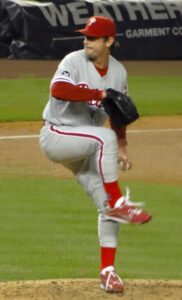
Photo: Chamber of Fear on Flickr (Original version) UCinternational (Crop), CC BY-SA 2.0 <https://creativecommons.org/licenses/by-sa/2.0>, via Wikimedia Commons
Jamie Moyer threw his first MLB shutout for the Cubs (a a 24-yer-old) on August 16, 1986. Twenty-four seasons later, on May 7, 2010, while with Phillies, he shutout the Braves in a 7-0 win in Philadelphia. At 47 years-170 days of age, it made him the oldest pitcher to record an MLB shutout (Modern Era). Moyer, by the way, threw only ten shutouts in his 25-season ML:B career (1986-91, 1993-2010, 2013 … Cubs, Rangers, Cardinals, Orioles, Red Sox, Mariners, Phillies, Rockies). Moyer retired with a 269-209, 4.25 record over 696 games (638 starts). He won ten or more games in 15 seasons and was twice a 20-game winner (21-7, 3.27 in 2003 and 20-6, 3.43 in 2001 – both for the Mariners).
There have been 169 shutouts thrown by pitchers forty years old or older. Here are the leaders:
Cy Young – 15;
Jack Quinn – 12;
Warren Spahn – 12;
Phil Niekro – 11;
Early Wynn – seven;
Nolan Ryan – seven;
Johnny Niggeling – seven; and
Dennis Martinez – seven.
Note: This post looks at leaders from the NL and AL in the Modern Era (post-1900) due partially to the availability and reliability of pre-1900 box scores/game logs and player birth dates. Further, pre-1900 rules changes make 1901 a logical break when looking at pitchers’ performance. For example, prior to 1888, a walk required, at varying times, nine, eight, six or five errant pitches. Prior to 1893, the pitching distance was notably less than today’s 60’6” (45-feet, 50-feet and 55-feet, six-inches at times). Foul balls began being counted as strikes in the NL in 1901 and the AL in 1903.
A second note on the charts. They may change as Negro League game statistics from 1920-48 are further documented and incorporator into the LB record books.
Primary resources: Baseball-Reference.com; Baseball-Almanac.com; The aaseballCube.com
Baseball Roundtable – Blogging Baseball Since 2012.

 Baseball Roundtable is on the Feedspot list of the Top 100 Baseball Blogs. To see the full list, click here.
Baseball Roundtable is on the Feedspot list of the Top 100 Baseball Blogs. To see the full list, click here.
Baseball Roundtable is also on the Anytime Baseball Supply Top 66 Baseball Sites list. For the full list, click here.
I tweet (on X) baseball @DavidBaseballRT
Follow Baseball Roundtable’s Facebook Page here. More baseball commentary; blog post notifications.
Member: Society for American Baseball Research (SABR); Negro Leagues Baseball Museum; The Baseball Reliquary.
P1024

